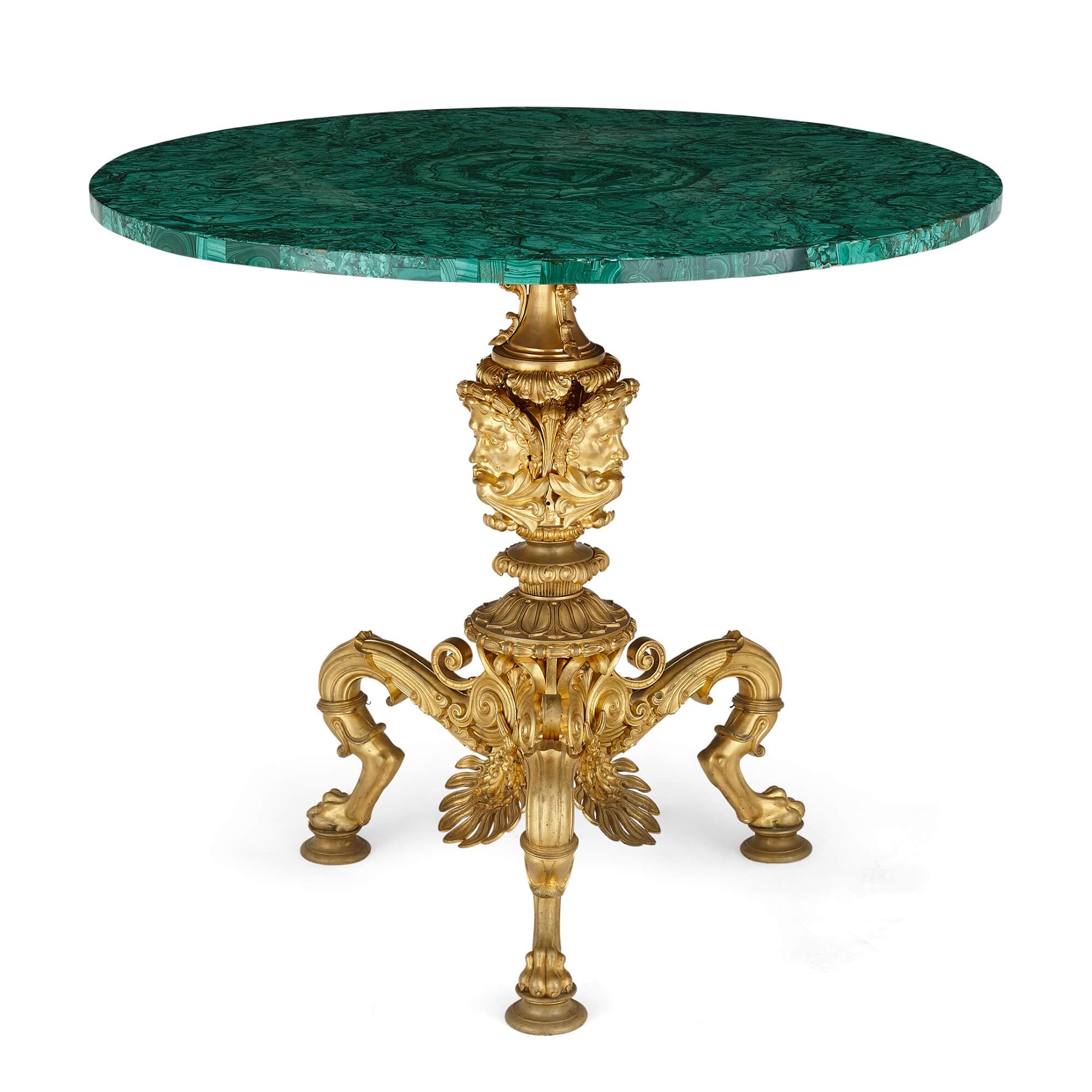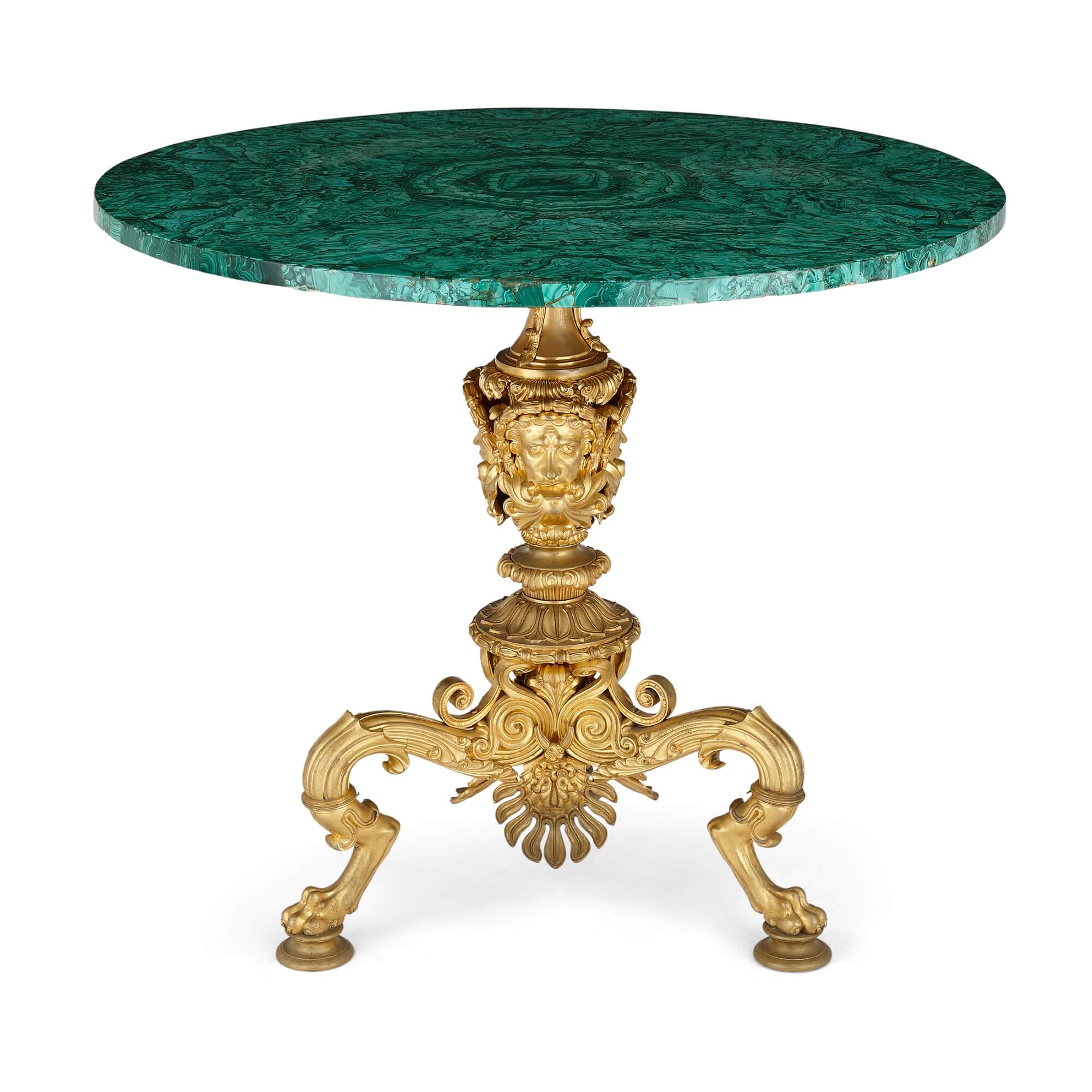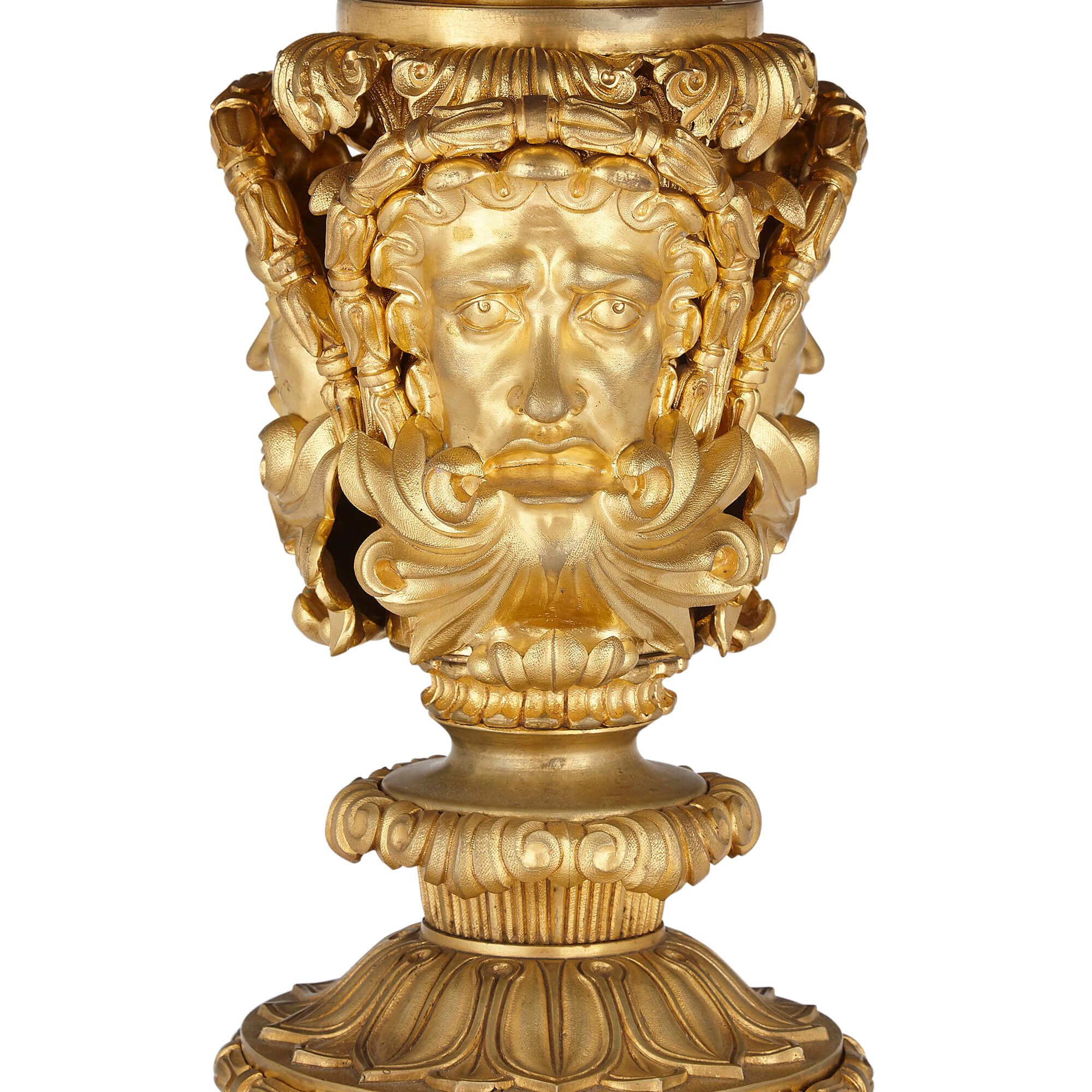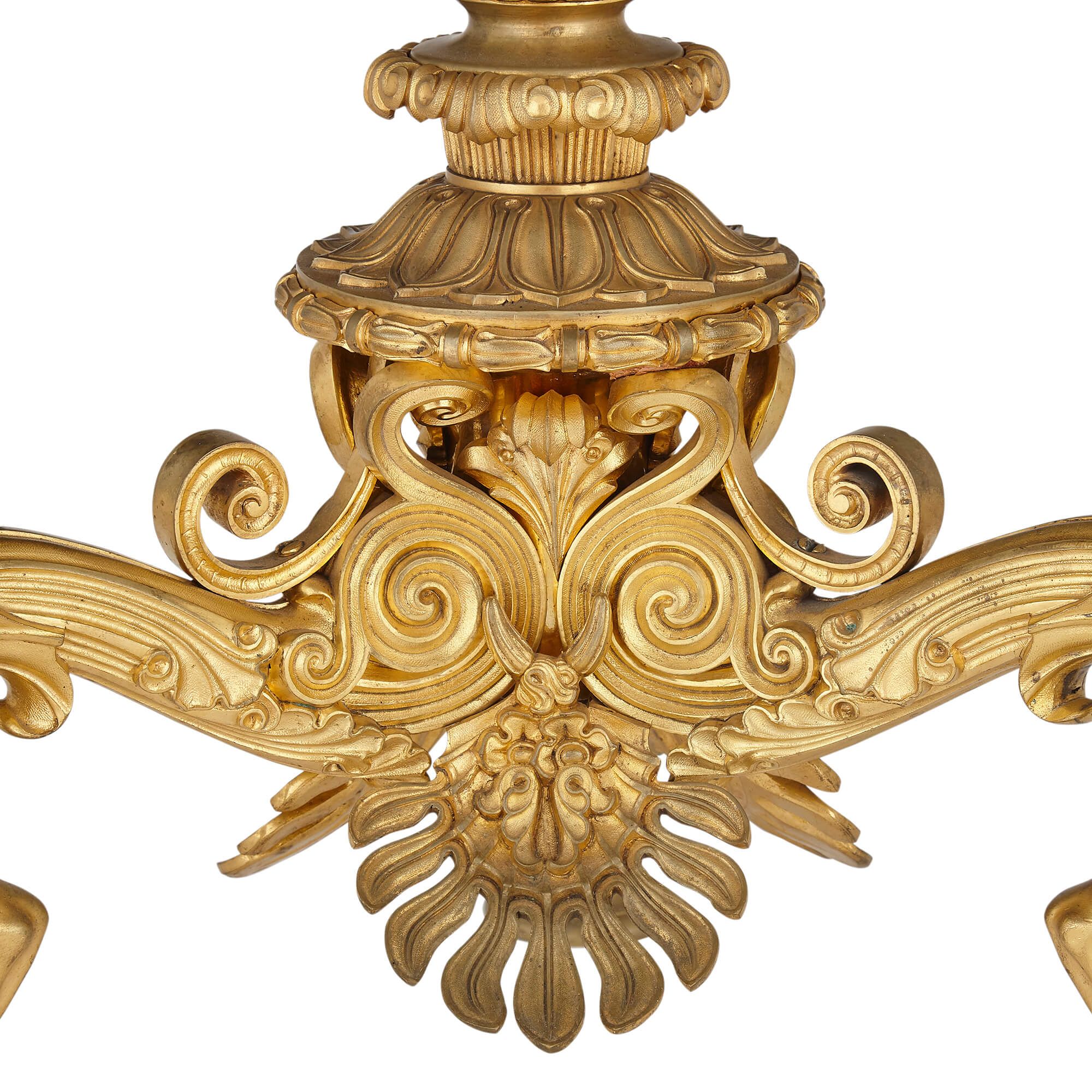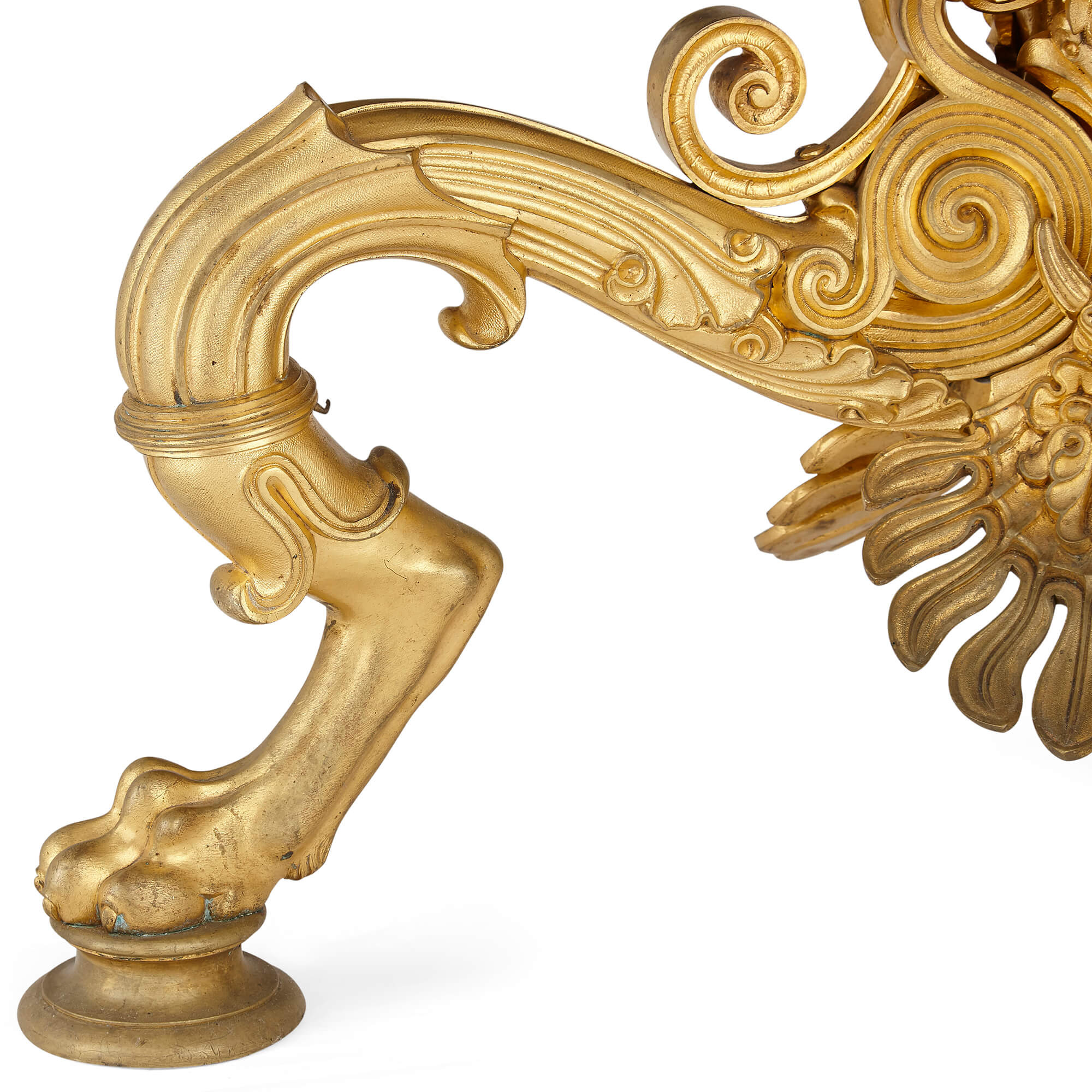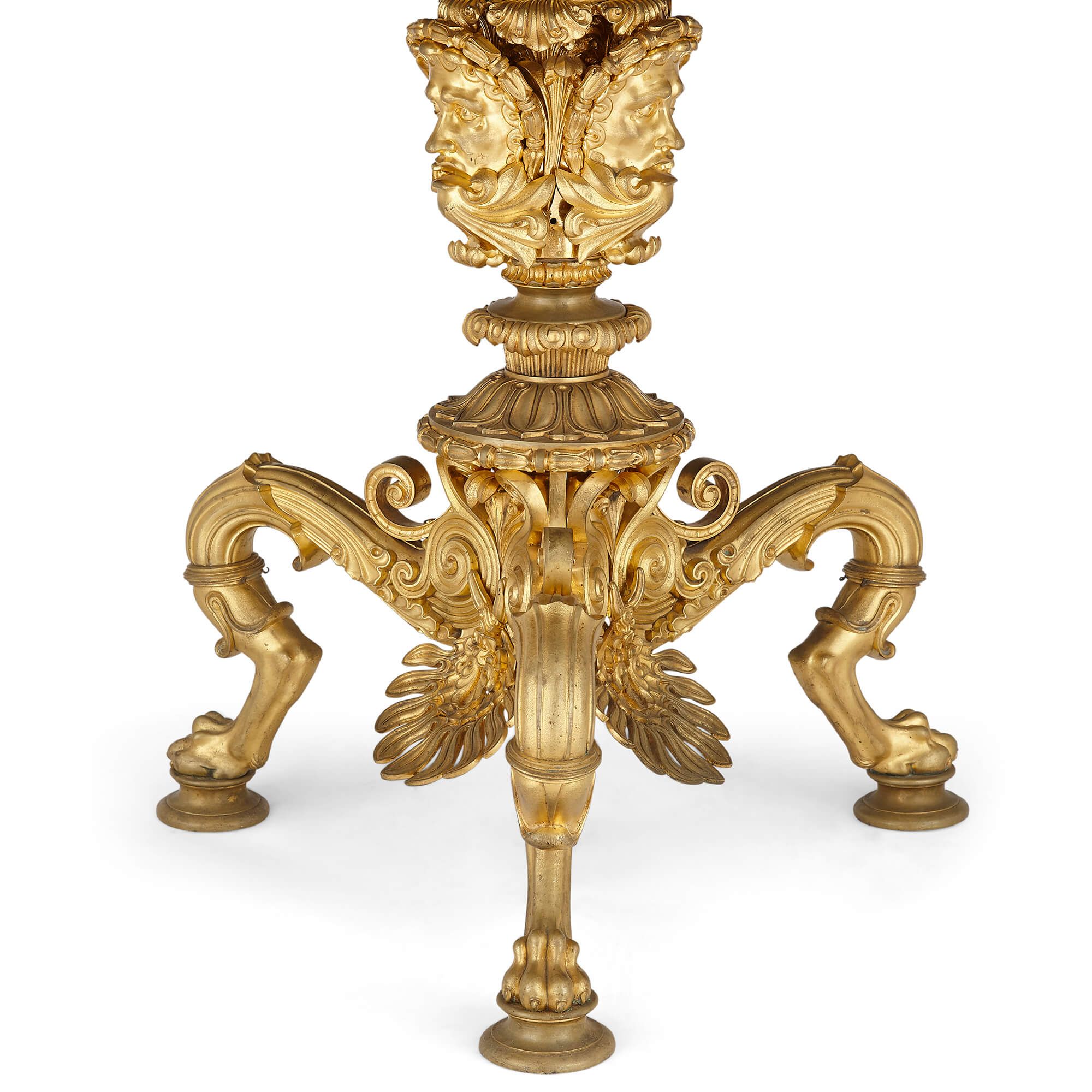The circular malachite top is supported by an ormolu stem base set with three male masks leading to three curved legs with paw feet above circular supports.
The present highly unusual table features a finely veneered malachite top in the 'Russian mosaic' technique on a beautifully cast gilt-bronze base. The vibrant green colour of the malachite contrasts brilliantly with the gilt base, and the exquisite techniques employed exemplify the skill and craftsmanship of the Russian stonecutters in the middle years of the 19th century.
The use of bold and imaginative designs, such as in this piece, became popular in Russia following the influence of architects such as A. Voronikhine and C. Rossi, who were employed to design and furnish the Tsars' Palaces and other public buildings following the defeat of Napoleon in the French invasion of Russia in 1812. These architects used daring shapes and unusual features in their designs (incorporating unusual grotesque mask and animal motifs, for example) and experimented with expensive materials such as malachite, semi-precious stones, and gilt bronze. This new grandeur exemplified the newfound confidence in Russia following the victory over Napoleon.
Up until the early 19th Century it had not been possible to use malachite on large scale, owing to the fragile nature of material. However, the new Russian lapidaries perfected a technique known as 'Russian mosaic' that allowed them to apply malachite, cut into millimetre-thick slices, as a veneer on to the surface of other materials. This new technique meant that malachite could be used in the production of the largest and most extravagant pieces of the time.
The best-known malachite workshop of the period was run by the Demidov family, who owned several mines including the celebrated Nijni Tagil malachite mine. In 1833, Prince Demidov presented Tsar Nicholas I with a malachite and gilt-bronze cupola in the shape of a Greek Temple and the magnificence of the object led to a new demand for objects and furniture incorporating malachite. In the late 1830s Empress Alexandra Feodorovna, wife of Tsar Nicholas I, commissioned the architect Alexander Brullov, to design The Malachite Room, for the Winter Palace in St. Petersburg. Subsequently, items made from malachite became extremely sought after and popular amongst the elite.
Literature-+
Featured in 'Splendeurs du Mobilier Russe' by A. Chenevière (Paris 1989), page 281 (figure 306)




